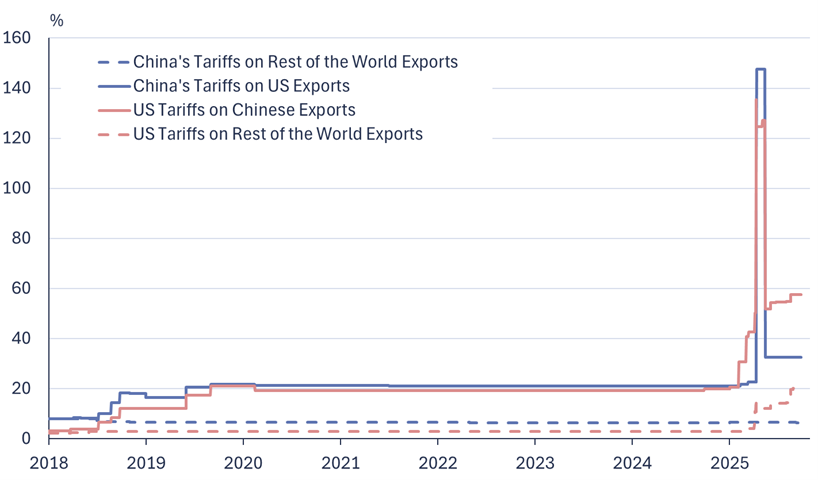BOFIT Weekly Review 44/2025
China and the United States agree to hold off on tariff hikes
Chinese president Xi Jinping and American president Donald Trump met face-to-face on Thursday (Oct. 30) in Busan, South Korea, after which Xi continued on to the Asia Pacific Economic Cooperation (APEC) forum in Gyeongju, South Korea, while and Trump, who had just finished his Asian tour, flew back to Washington DC. While the parties have not yet released an official readouts of the meeting, Trump said the discussion went smoothly and that a deal was struck. According to comments by China’s commerce ministry, it is likely that the US had agreed to reduce its “fentanyl tariffs” from 20 % to 10 %, and the reciprocal tariffs of April (postponed in May and August) will now be pushed another 12 months into the future. According to China’s commerce ministry, China will make corresponding measures. Apparently, the implementation of export controls on rare earth elements, tightened by China in October, and the imposing of mutual measures on maritime transport, including port fees, will also be put off for a year.
Reaching an agreement was seen at important for both parties as the tariff levels between the two countries risked returning next month to the astronomical levels threatened in late April and early May. Analysts at the Peterson Institute for International Economics (PIIE) calculate that the effective tariff level in early May hit around 140 % (see figure). Effective tariffs can be calculated in several ways. PIIE uses the structure of US-China trade prior to the start of the trade war in 2017. As trade in many products essentially ceased due to high tariffs, the structure of trade changed. Thus, the effective tariff level falls sharply once adjusted for the current trade structure. For example, the tariffs collected this year by the US on imports from China represent about 40 % of the value of trade. Although China and the US may to have reached agreement on some matters, tensions between the two are expected to remain high.
Effective tariff rates* between China and the US, as well as with the rest of the world (as of 25.9.2025)

*) Based on trade structure of 2017.
Sources: PIIE, Macrobond and BOFIT.